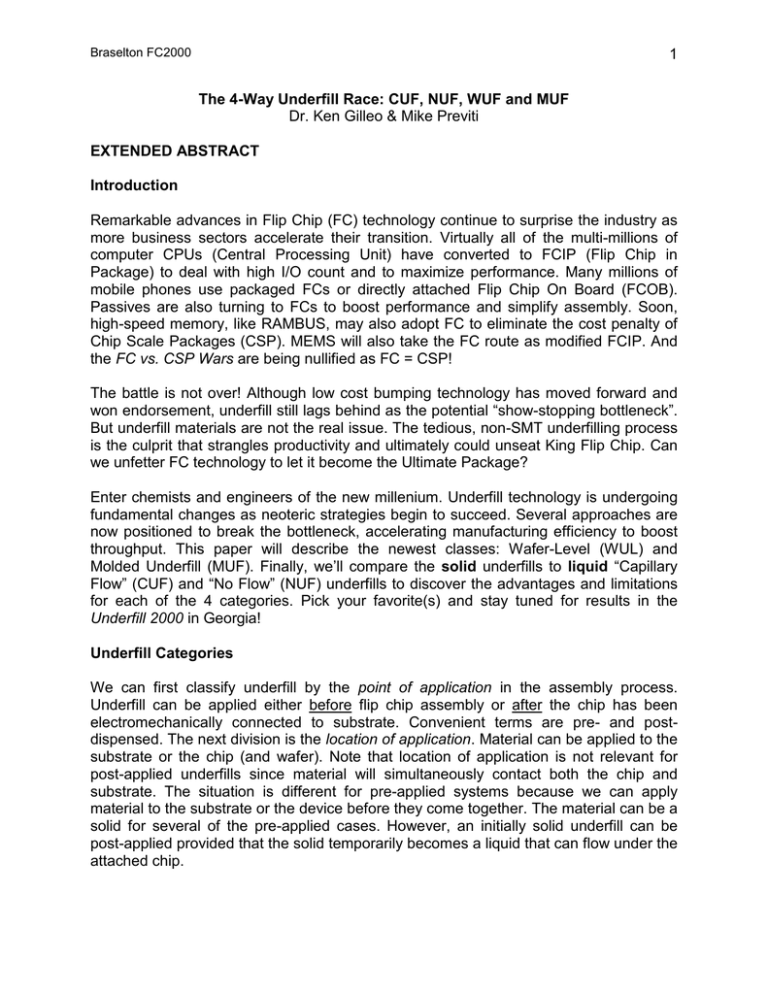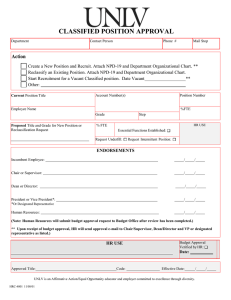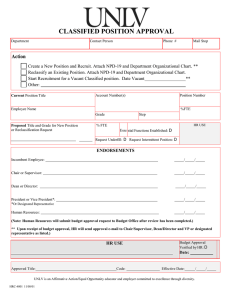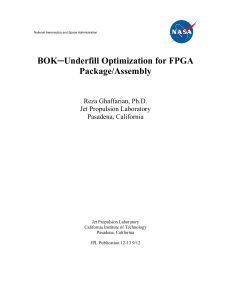1 The 4-Way Underfill Race: CUF, NUF, WUF and MUF Dr. Ken
advertisement

Braselton FC2000 1 The 4-Way Underfill Race: CUF, NUF, WUF and MUF Dr. Ken Gilleo & Mike Previti EXTENDED ABSTRACT Introduction Remarkable advances in Flip Chip (FC) technology continue to surprise the industry as more business sectors accelerate their transition. Virtually all of the multi-millions of computer CPUs (Central Processing Unit) have converted to FCIP (Flip Chip in Package) to deal with high I/O count and to maximize performance. Many millions of mobile phones use packaged FCs or directly attached Flip Chip On Board (FCOB). Passives are also turning to FCs to boost performance and simplify assembly. Soon, high-speed memory, like RAMBUS, may also adopt FC to eliminate the cost penalty of Chip Scale Packages (CSP). MEMS will also take the FC route as modified FCIP. And the FC vs. CSP Wars are being nullified as FC = CSP! The battle is not over! Although low cost bumping technology has moved forward and won endorsement, underfill still lags behind as the potential “show-stopping bottleneck”. But underfill materials are not the real issue. The tedious, non-SMT underfilling process is the culprit that strangles productivity and ultimately could unseat King Flip Chip. Can we unfetter FC technology to let it become the Ultimate Package? Enter chemists and engineers of the new millenium. Underfill technology is undergoing fundamental changes as neoteric strategies begin to succeed. Several approaches are now positioned to break the bottleneck, accelerating manufacturing efficiency to boost throughput. This paper will describe the newest classes: Wafer-Level (WUL) and Molded Underfill (MUF). Finally, we’ll compare the solid underfills to liquid “Capillary Flow” (CUF) and “No Flow” (NUF) underfills to discover the advantages and limitations for each of the 4 categories. Pick your favorite(s) and stay tuned for results in the Underfill 2000 in Georgia! Underfill Categories We can first classify underfill by the point of application in the assembly process. Underfill can be applied either before flip chip assembly or after the chip has been electromechanically connected to substrate. Convenient terms are pre- and postdispensed. The next division is the location of application. Material can be applied to the substrate or the chip (and wafer). Note that location of application is not relevant for post-applied underfills since material will simultaneously contact both the chip and substrate. The situation is different for pre-applied systems because we can apply material to the substrate or the device before they come together. The material can be a solid for several of the pre-applied cases. However, an initially solid underfill can be post-applied provided that the solid temporarily becomes a liquid that can flow under the attached chip. Braselton FC2000 2 The Table 1 shows the categories of underfill that are possible. Note that solid underfill is not only feasible, its use is logical and practical. Table 2 lists probable applications for the various classes. Table 1 – Underfill Categories Application Point PHASE Pre-Dispense Post-Dispense On Substrate Liquid Solid commercial commercial NA* NA* Liquid Solid difficult In R&D stage NA* NA* Liquid Solid NA NA std. capillary molded On Chip or Wafer-Applied Both Simultaneously * Simultaneous contact will occur Status Capillary underfill (CUF) has been used for over a decade and is well established in volume use for many, application including CSPs. Although products perform well, the process requires added steps, equipment and extra floor space. Productivity, although now maximized, needs to be increased with a new strategy. Much effort is being expended to replace CUF. While the process can be a burden, there are important advantages that will keep this class viable in the future, however. A chip can be assembled, tested and reworked prior to underfilling. Proven reliability and the ability carefully adjust properties make CUF the ideal choice for large, expensive CPUs. Pre-dispensed liquid-on-substrate material, sometimes called “No Flow” (NUF), has been introduced as the higher productivity alternative to capillary flow. NUF eliminates fluxing and a separate cure step since this is typically accomplished during solder reflow. While NUF improves productivity, performance may be lower than CUF. The main problem is it’s higher than optimum coefficient of thermal expansion (CTE). The usual method of reducing underfill CTE is to add filler, but this interferes with solder joint formation during reflow. NUF can also trap air during chip placement unless the process is well understood. The un-optimized CTE and flow displacement issues suggest that NUF will be used mostly for smaller, lower value chips. The ideal underfill should be self-dispensing and require no added equipment – totally transparent to the assembly process. The concept of applying solid flux and underfill to wafers has been under investigation for at least two years. While the idea has great appeal, no product has yet been commercialized although a series of patents have been filed and the government has funded research. WUF or wafer-level underfill remains the great idea waiting to happen. Braselton FC2000 3 The packaging industry has come to depend on transfer molding for most product encapsulation. Solid, but reactive epoxy, hardener and filler are pressed into preforms that can be melted, injected and cured for high productivity using automatic machines. So why not use molded underfill (MUF)? Significant work, primarily by Plaskon, has led to development of materials and process for MUF. Beta-site testing continues to look promising. However, the MUF process appears most practical for FCIP and is expected to find major use for BGAs and some CSPs. Class CUF NUF WUF MUF Equipment Dispenser & oven Dispenser None Trans. molder Self-flux no yes yes no Table 2 Status Rate moderate fast v. fast v. fast comm. comm. R&D beta Reliability good moderate unknown good Main Use CPUs, general small FCs all? FCIP Conclusions The increasing use of flip chips for added performance and extreme miniaturization has focused the industry on increasing total process productivity. Underfilling has been long recognized as the annoying slow step – the production bottleneck. While CUF has been improved during the last decade, the extra cycle time and equipment cannot be eliminated by this approach. NUF has been proffered as a solution but it is only a partial answer. WUF still holds promise of the magic material the makes the process disappear, but it is still just a promise. MUF looks like a strong contender for FCIP and a good fit for the packaging infrastructure. But the 4-way underfill race has a way to go and perhaps there may be even stranger approaches on the horizon. As person-of-thecentury, Albert Einstein said, “Unless an idea is absurd, there is no hope for it”.




